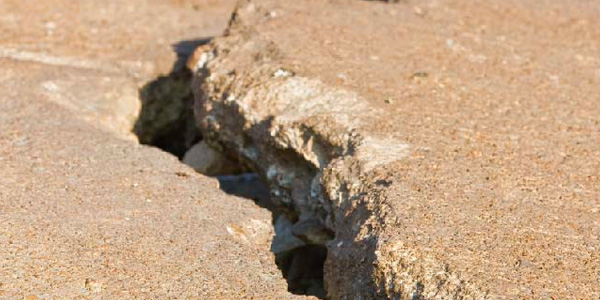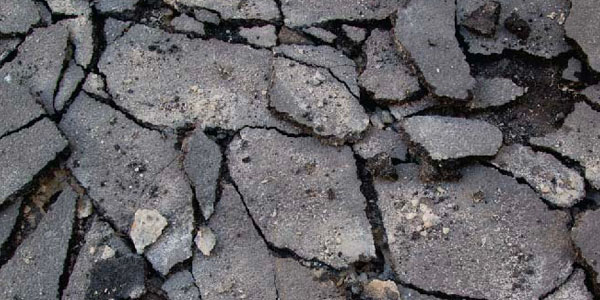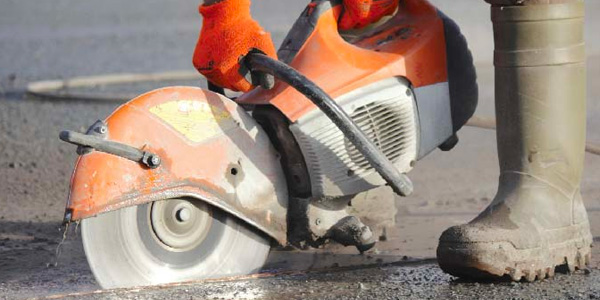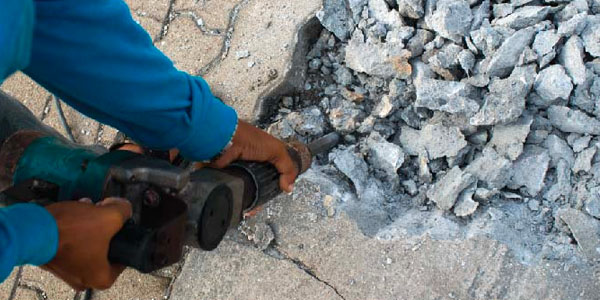Demolishing Your Driveway: A Step-by-Step Guide

How to Remove a Driveway Yourself
Removing your driveway is a daunting task. With hours of work involved and contractor prices in the $3,000 range, it’s tempting to put off. But if you use our handy DIY guide, you’ll save on driveway demolition costs, prevent future issues and increase your home’s value.
How Much Does It Cost to Remove a Driveway?
If you’re working on a tight budget, DIY driveway demolition is your best option. Even if you’re hiring a contractor to replace your driveway, you’ll save a pretty penny demolishing the asphalt and concrete yourself.
On average, it costs $2,300 to remove an asphalt driveway and $1,800 to remove a concrete driveway, which doesn’t include the cost for installing the new driveway. You’ll need to hire a paving company eventually, so if you can avoid demolition fees, the project is much more budget-friendly. Since it only takes a few tools and a bit of patience to remove a driveway, many homeowners find it’s worth the effort to tackle themselves.
When Should You Remove Your Driveway?
If your driveway has a few chips and scratches, it probably doesn’t need to be replaced. There are many ways to repair minor damages without breaking the bank or a sweat. But if you’re finding the following under your cars, a full-on driveway demolition is in your foreseeable future:
- Cracks that are more than two inches deep
- Unlevel concrete or asphalt
- Sunken-in areas and potholes


“You should replace your driveway when it’s broken up to the point you’re tripping and falling over it. My parents’ driveway is around 50 years old and they’re in their 80s. It has no safety hazards for them, even at their age, so there’s no sense in replacing it.”
Bruce Conway, Concrete Repair Specialists PGH
Can Your Driveway Be Removed?
Before kicking your demo into gear, there are two important factors for determining if your driveway can be removed. It’s important to run your plans by an inspector first, as you’ll incur hefty fines if you damage the property while demolishing your driveway.
Find Your Utility Lines
Electricity, water, oil and gas lines all run underneath your driveway, so it’s important to keep them intact. Have an inspector find your utility lines and mark them accordingly. These markers indicate where to stop working – you don’t want to go any deeper than your pipes, as you could accidentally cut off your access to heat, light and functional plumbing. (You know, the essentials.)
Not only will this help you avoid countless headaches in your household, but it will keep you from paying utility line damages. Remember, DIY driveway removal is supposed to be budget-friendly, so it’s important to prevent issues and keep it that way.
Determine the Volume of Your Driveway
Simplify your cleanup by calculating your driveway’s volume ahead of time to estimate how much debris you’ll be tossing and lay out your scope of work. To estimate the volume of your driveway, measure its length, width and thickness in inches, and perform the following calculations:
- Multiply all three numbers together.
- Convert into cubic yards by dividing this number by 27.
How to Demolish a Driveway
There are two ways to remove a driveway: by hand or with heavy equipment. Note that driveway demolition tools are extremely powerful and can be dangerous if not handled properly. If you’ve never used a jackhammer, skid steer or excavator, consider calling someone who has to avoid damaging your property or harming yourself in the process.
Bear in mind that the driveway removal process varies from home to home. The work may be similar, but concrete and asphalt driveways are different, and should be demolished accordingly.

Removing an Asphalt Driveway
No matter your preferred asphalt demolition method, you’ll need a few tools to get started. In both cases, we recommend starting in the most damaged area of your driveway and working your way down from there. Remember that asphalt attracts heat, so make sure to drink water and take breaks when necessary, especially if you’re working on a warm day.
If you're working by hand:
Before asphalt demolition begins, rent a jackhammer or circular saw from your local hardware store. Locate where your driveway is in the worst shape and start cutting the asphalt into small, manageable pieces in the center of the damaged spot. After your entire driveway is demolished and broken into chunks, use a shovel to move your debris into a pile. To avoid inhaling the harmful toxins and chemicals asphalt contains, we recommend wearing a mask and gloves.
If you're working with tools:
Rather work with heavy equipment? Along with a jackhammer, shovel and circular saw, you’ll need to rent an excavator. This will streamline your post-driveway demolition cleanup, as you can easily move heavy, bulkier pieces of asphalt directly into your dumpster with the machine.

Asphalt Removal Tool Glossary
- Jackhammer – a vertical handheld tool that breaks up your driveway.
- Electric chipping hammer – a mechanical hammer that chips away stubborn, sticky pieces of asphalt.
- Circular Saw – a mechanical saw that cuts asphalt into pieces. For this type of project, it’s much easier to use than a manual saw.
- Excavator – a rideable machine that moves bulky debris with ease. This is great to have on hand, especially if you’re prone to making messes.
After estimating the volume of your driveway, you should have a good idea of how much asphalt you’re tossing. We’ll get to the cleanup logistics later on, but for now, move your debris to the side.

Removing a Concrete Driveway
Breaking up a concrete driveway? The process differs slightly from asphalt demolition. While the tools you need are similar, there are a few outliers. Working by hand? Grab a water bottle and a wet towel – DIY concrete removal is labor intensive.
If you're working by hand:
While most of the work will be done by hand, you’ll need a jackhammer to get started. Beginning in a top corner of your driveway, break concrete into small pieces and shovel debris into an out-of-the-way pile. Make a conscious effort to stay hydrated and lift only what you can carry.
Manual concrete removal is better suited for smaller driveways and people who are used to physical labor. If you choose to work this way, you’ll likely finish the job in a week or longer. That said, many hands lighten the load – see if your friends or family members will lend you a favor and help.
If you're working with tools:
Before revving up your skid steer and other concrete removal tools, get comfortable with the equipment you’re using. Even if you’re handy, read over tool manuals and review controls when necessary. When you’re up to speed, head to a corner of your driveway and use the jackhammer attachment on your skid steer. Break up the concrete in sections, and use the machine’s crane and bucket to move debris aside.
Concrete Driveway Removal Tool Glossary
- Pavement breaker – a vertical, “T” shaped machine that wears down stubborn pieces of concrete.
- Skid steer – a rideable tool with various attachments. This helps you break, move and destroy concrete blocks to simplify your cleanup.
- Hydraulic concrete smasher – a skid steer attachment that makes chunks of concrete smaller and more manageable to move.
As you can tell by the name of each tool, this machinery is heavy duty. You don’t want to use a “concrete smasher” or “pavement breaker” the wrong way. The resulting damage could be critical and expensive.
Driveway Demolition Safety Tips
Whether you’re working by hand or using heavy duty tools, don’t overexert yourself and remember to stay hydrated. As you break up concrete and asphalt, work around the city’s driveway markers to make sure you don’t damage utility lines and put yourself behind schedule.
Plan Ahead for Your Cleanup
If you put concrete and asphalt debris on your curb, the city usually won’t take it. Heavy construction materials can’t be tossed with normal household trash and must be disposed of in other ways. When your driveway demolition is complete, clear your work area with one of the following:
- A concrete or asphalt dumpster rental.
- A post on Craigslist or Facebook Marketplace.
- A trip to the dump in your pickup truck.
- A “free pile” on your front lawn.



